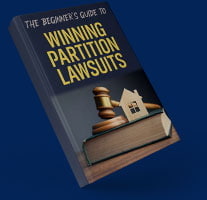Torrance Partition Lawyers
The City of Torrance was founded in October 1912 when Jared Sidney Torrance and a group of investors purchased the land as part of an old Spanish land grant. The plan was to create a planned modern industrial city with both residential and industrial uses. Today, while much has changed, Torrance has remained a largely stable and balanced city, mixed with residential, commercial, and industrial interests. As a town with a rich history in residential development, residents of Torrance often own homes with others due to inheritance, which can lead to disputes with co-owners. Generally, the best Torrance Partition Lawyers usually find partition action to be the best remedy for disputing co-owners in four broad categories:
- Partnership owned real estate dispute;
- Brother-Sister real estate dispute;
- Investor-Investor real estate dispute; and
- Significant other real estate dispute
What Is a Partition Action in California?
Generally, partition is any division of real property between co-owners, where each co-owner obtains an ownership interest. A partition action is the forced sale of real property by a co-owner under the court’s supervision. Partition merely determines and allocates to the parties their respective interests in the property. (Cunha v. Hughes (1898) 122 Cal. 111.)
In the partitioning of property, the common interests in the property are segregated or terminated. (Summers v. Superior Court (Wan Fen Tan) 24 Cal.App.5th 138.) Partitions are generally favored by the and may occur by an agreement between the co-owners or by a judgment in an action. Typically, a partition may be made by either a physical division or sale of the property. in many modern transactions, a partition of the property by sale is preferable since often times, a division of the property will result in parcels that are not equal to the value of the whole property before the division. (Cummings v. Dessel (2017) 13 Cal.App.5th 589, 597.) Also, a “physical division may be impossible due to zoning regulations or may be highly impractical.” (Butte Creek Island Ranch v. Crim (1982) 136 Cal.App.3d 360, 365.) The best Torrance Partition Lawyer will be able to share information on this process with you.
What Are the Steps in a Partition Action?
Generally, the first step in the partition lawsuit process is not a lawsuit, but an earnest attempt to resolve the matter informally, such as through a partition agreement. Only when it is clear that litigation is the only option, is it clear that a partition lawsuit is appropriate.
When it is clear that a partition lawsuit is necessary, then the process begins with the filing of a complaint in the county where the property is located. There are several technical requirements for the partition complaint, and many important steps that must be taken during the lawsuit to ensure that the process is managed effectively.
In a partition lawsuit, there are generally four different steps. First, the court determines each party’s ownership interests. Second, the court will decide on the manner of sale. Third, the court will order the property be sold. Fourth, the proceeds from the sale will be divided between the parties based on their relative contributions to the property.
While some may believe that inherited property cannot be partitioned, this is incorrect. Instead, when the property is owned as the result of an inheritance, there may be an additional step for an appraisal, and a right of first refusal, as provided by the Uniform Partition of Heirs Act. Under this act, where a co-tenant requests partition by sale, the law gives the non-partition owner the option to buy all of the interests of the co-tenants who requested the sale. A top [PLACE] Partition lawyer will be familiar with the process.
Can You Recover Attorneys’ Fees in a Partition Action?
The Court may award attorneys’ fees in the partition action that are paid by a party to the action for the common benefit of all the co-owners. (CCP § 872.010.) The Supreme Court has spoken on this issue directly, holding that under former section 796, the predecessor to the current partition cost statute, “counsel fees may be allowed … for services rendered for the common benefit even in contested partition suits.” (Capuccio v. Caire (1932) 215 Cal. 518, 528-529 (Capuccio).)
Moreover, cases interpreting those sections continue to permit the allocation of attorney fees in contested partition actions. (Forrest v. Elam (1979) 88 Cal.App.3d 164, 174.) From these authorities it is evident that the “common benefit” in a partition action is the proper distribution of the “‘respective shares and interests in said property by the ultimate judgment of the court.’ ” (Capuccio, 215 Cal. at p. 528.) This sometimes will require that “ ‘controversies’ ” be “ ‘litigated’ ” to correctly determine those shares and interests but this ultimately can be for the common benefit as well. The fact that a party resists the partition does not change this. (See Randell v. Randell (1935) 4 Cal.2d 575, 582 [“The presence and litigation of controversial issues between all the parties does not preclude the allowance of attorney’s fees for services connected with such issues where such services are found to be for the common benefit of the parties.”].) A knowledgeable Torrance Partition Attorney will be able to give you good advice on these issues.
What Are Claims for “Contribution”?
A partition action frequently involves disputes related to the allowance for improvements by one joint owner or the other. The court may, in all partition cases, make an order for an allowance, accounting, contribution, or other compensatory judgment among the parties in accordance with the principles of equity. (CCP § 872.140.) For instance, the court may make an equitable adjustment in order to offset the use value of the property against the improvement expenses. (see Hunter v. Schultz (1966) 240 Cal.App. 2d 24, 31.)
Code of Civil Procedure section 872.140 allows the court to make such orders for compensatory adjustments for items such as common improvements, unaccounted rents and profits, and other matters where contribution may be required. (Cal. L. Rev. Comm. Comment to CCP § 872.140.) An example of these types of improvements could be for remodeling a bathroom, rebuilding a deck, or painting the outside of the house. The property must be divided in a manner that allocates an individual any part that he or she has improved or that individual’s predecessor in interest, to the extent that it is practical and can be done without materially injuring the rights of the other co-owners. The determination of a division of allocation does not include the value of the improvements. (CCP § 873.220.) An experienced Torrance Partition Attorney will be intimately familiar with these matters.
A Partition Case Study: Barajas v. Triola (2020)
When a court grants relief in a partition action, it must determine the interests of the parties in the property. (CCP § 872.720). Once that is determined, then the court can ascertain the state of the title “to the extent necessary to grant the relief sought or other appropriate relief”. (CCP § 872.620). The following paragraphs discuss how the Court of Appeal determines whether a trial court may determine a party’s interest when they are not on record title or fail to file a quiet title action in Barajas v. Triola (2020) 2020 WL 6389521.
In Barajas, Annette Barajas filed a partition action against Angel Marie Triola and her corporation, Third Career Investments, LLC, as to certain real and personal property. From 1991 to 1994, Barajas and Triola lived in a house together that was owned by Mary Bramwell, Barajas’s aunt. In 1992, Bramwell was in financial difficulty and was contemplating bankruptcy. In an effort to protect the house from creditors, Barajas and Triola helped Bramwell transfer the house to Triola for no consideration. The grant deed was recorded in 1993.
The plan was unsuccessful, and the house ended up in the bankruptcy estate. In 1996, Barajas and Triola signed a stipulation where they agreed to pay the bankruptcy trustee $75,000 and execute a $40,000 promissory note in settlement of all claims for the pre-petition transfers. They delivered quit claim deeds for both properties as security for the note. When the note was paid off, the trustee deeded the house and the property to Barajas and Triola as tenants in common. Barajas then deeded her interest in the house to Triola, and Triola deeded her interest in the other property to Barajas.
The parties ended their relationship in December 1997, but remained goods friends. A dissolution agreement was drafted in 1998, that provided that title to the house and the other property would be transferred into both of their names, to be held jointly. This document was never signed or dated. Shortly after, a deed transferring the other property from Barajas to both of them was recorded. A similar deed transferring title to the house from Triola to both of them was executed but lost. In 2010, the parties had a falling out after a serious altercation.
The parties had acknowledged their joint interest in the house several times, shown through a complaint they filed against a neighbor where it was alleged both owned the house and in tax returns where each represented that they owned 50% in the house.
In May 2012, Triola transferred title to the house to her wholly owned corporation. The trial court found the house was owned 50 percent by Barajas and 50 percent by Triola. A partition by sale was ordered, and interlocutory judgment was signed and filed. Triola appealed.
Triola argued that the trial court could not determine that Barajas had an ownership interest in the house because Barajas was not on record title and did not file a quiet title action. She also asserted that any claim that Barajas may have had to the house was barred by the statute of limitations, statute of frauds, and laches.
The Court of Appeal for the Second District affirmed the trial court. The Court stated that in a partition action, a trial court had to determine the interests of the parties in the property before it granted relief and that determination was not dependent on record title or the filing of a quiet action title. Additionally, the court determined that there was no statute of limitations in a partition action, and substantial evidence supported the court’s findings of fact as to the statute of frauds and laches.
First, on the issue of the statute of limitations, the Court emphasized that the California Supreme Court had long held that a statute of limitations never bars relief between tenants in common in an action for partition. Adams v. Hopkins, 77 P. 712, 715 (Cal. 1904). The reasoning behind this was that a co-tenant already had an interest in the property and therefore an absolute right to bring a partition action at any time, absent waiver or estoppel. Am. Med. Intl., Inc. v. Feller, 131 Cal. Rptr. 270, 273 (Cal. App. 2d Dist. 1976). The only exception would be where a party has lost all right to and in the land and such right has by prescription become vested in another. Adams at 715. Finding that nothing in the trial court’s findings in its decision would implicate an exception, the Court of Appeal did not find that the partition action was barred by a statute of limitations.
Moreover, the Court noted that Triola did not cite any case involving an action for partition, but rather one on a quiet title action. The case was inapplicable, and it could not be used to undercut the long-standing rule that no statute of limitations applied in a partition action. The trial court found that the parties had, pursuant to the Dissolution Agreement, executed deeds to transfer title to the house and the other property to be held jointly. The one deed putting Triola on record title to the other property was recorded and the other putting Barajas on the title was lost so there was no reasons why the deeds would be treated differently. Triola tried to emphasize that Barajas was not on record title, but the Court clarifies that the law provides that a mere failure to record a deed does not destroy the transfer. Therefore, no statute of limitations had even began to run.
As to the laches argument, the Court of Appeal stated that whether laches applied in a particular case was a question of fact, and the trial court found that there was no evidence to support the elements of laches. The argument was waived, and the record was not adequate to review the issue.
The Court also found that Triola’s argument was mistaken in asserting that the court violated the rule that an action for partition cannot create a new title when it determined Barajas had a 50 percent interest in the house without requiring her to file a quiet action title. The Court stated that the trial court was charged with ascertaining the state of title to the extent necessary to grant the relief sought. CCP § 872.620. Further, the trial court had to enter a judgment that determined the interests of the parties in the property before they could grant relief. CCP § 872.720(a). Triola did not demonstrate in how the pleadings disregarded these requirements.
Triola’s next argument was that because Barajas was not on record title, the trial court could not determine whether she had an ownership interest different than title. The Court of Appeal rebutted this by stating that case law had consistently said that in an action for partition, all the parties’ interests are put in issue regardless of record title.
The Court of Appeal concluded its analysis by finding that there was no statute of frauds barring the action. The trial court had rejected this defense in its tentative ruling because the statute of frauds must be pled as an affirmative defense and Triola had not done so. Since the statement went unchallenged in subsequent filings, and the trial court’s finding that the defense had been waived was included in the final statement of decision, the issue was waived. The Court also stated that since a partition action was an equitable proceeding, equitable principles applied. In this case, equitable estoppel could preclude the use of a statute of frauds defense when applying it could perpetuate fraud. Byrne v. Laura, 60 Cal. Rptr. 2d 908, 917 (Cal. App. 1st Dist. 1997). The trial court concluded that equitable estoppel was appropriate. Therefore, the trial court’s ruling was affirmed.
A court must determine the interests of the parties in a partition in order to grant relief. Here, the lack of record title and failure of filing a quiet title action had no impact on the court’s determination of those interests. The evidence supported the trial court’s finding and therefore its determination was upheld.
How the Underwood Law Firm Can Help
A court’s determination of ownership interests in a property depends on the facts and circumstances of each particular case. Factors such as agreements and who pays for certain expenses for the property can ultimately affect the outcome of a partition case. If you are considering partition as an option, or find yourself defending one, then you may benefit from good legal advice on the topic. Please contact Underwood Law Firm, P.C., for an initial consultation.
Learn more here.
Contact Us Today
4590 MacArthur Boulevard
Newport Beach, CA 92660
949.347.5000









